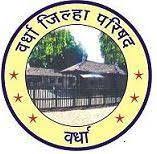General Administration Department
The work of establishment related works, employee service related matters, general assembly and standing committee meetings as well as coordination of all departments of the Zilla Parishad is done through the General Administration Department.
Panchayat Samiti under Zilla Parishad
- Wardha
- Selu
- Hinganghat
- Samudrapur
- Arvi
- Ashti
- Karanja
- Deoli
Various subject committees under Z.P. Wardha are as follows:-
- Standing Committee
- Water Management and Sanitation Committee
- Women and Child Welfare Committee
- Social Welfare Committee
- Agriculture Committee
- Animal Husbandry and Dairy Committee
- Education and Sports Committee
- Health Committee
- Construction Committee
- Finance Committee



